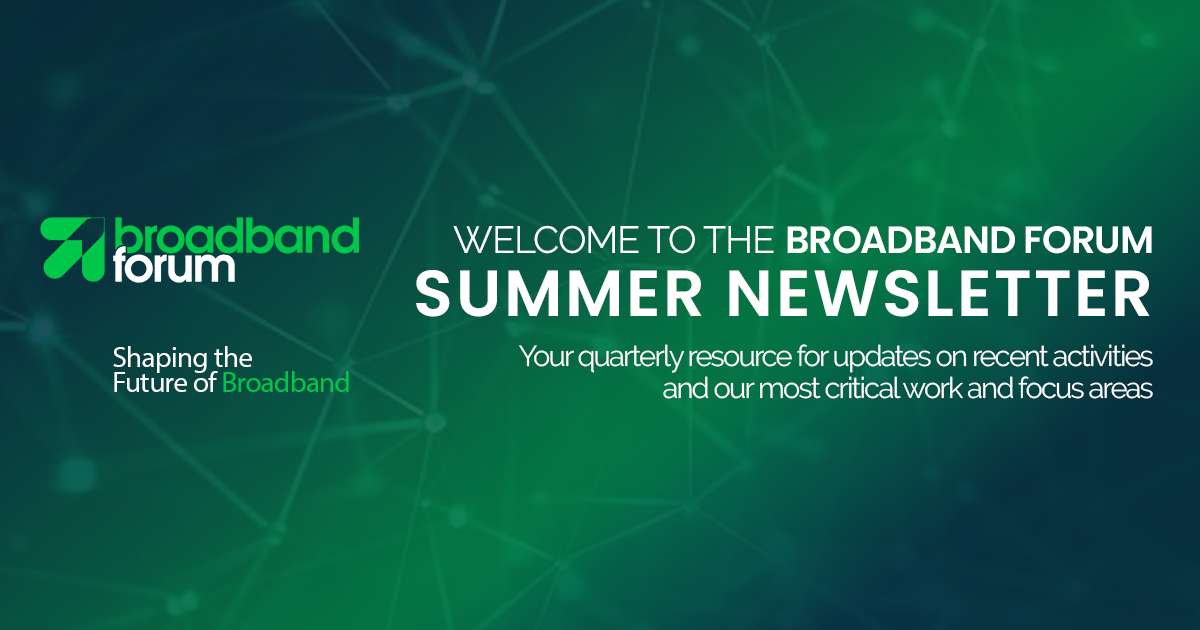A week of progress and community in Munich
Bavaria’s capital city provided a warm June welcome to the broadband community – thanks in no small part to the hospitality of our event sponsor Axiros – as our Summer Member Meeting began.
During the opening plenary in Munich, we were reminded of Broadband Forum’s incredible successes during the past year. We have seen significant membership growth and dozens of new vendors and devices have been certified across our programs. With our new work area structure, we have further ramped up our efforts to drive the industry’s transition to user-centric services-led broadband and continue to integrate key technologies such as AI and Machine Learning into the broadband standards landscape.
The BBF and its membership have taken part in a number of engaging panel discussions and BASe events, enjoyed cross-industry collaboration, and launched exciting new projects covering the full breadth of broadband, since our last meeting in March.
 The BASe Technical Summit – held in conjunction with the Summer Member Meeting – provided an unparalleled platform for thought leadership and expertise on the most important technological innovations, opportunities, and challenges in broadband today. The Broadband Forum community of members, work area directors and project leads, guests, and staff brought an energy, excitement and collaboration to the meeting venue that was constant throughout the week.
The BASe Technical Summit – held in conjunction with the Summer Member Meeting – provided an unparalleled platform for thought leadership and expertise on the most important technological innovations, opportunities, and challenges in broadband today. The Broadband Forum community of members, work area directors and project leads, guests, and staff brought an energy, excitement and collaboration to the meeting venue that was constant throughout the week.
I would like to say a big congratulations to our - and my fellow – newly elected Broadband Forum Board Directors, John Blackford (Vantiva), David Cluytens (Orange), Francisco De Carvalho (Radisys Corporation), and Mike Talbert (Wistron NeWeb Corporation). I would also like to extend my congratulations to Jason Walls (QA Cafe) who has become the new Marketing Chair.
Thanks to everyone who made Munich such a memorable and successful meeting. Hopefully we will see you during what promises to a very busy period of Broadband Forum events before our Fall Member Meeting in Tucson, Arizona, in November!
- Broadband Forum President and Service Requirements Work Area Director Manuel Paul
Thank you to our sponsor, Axiros!
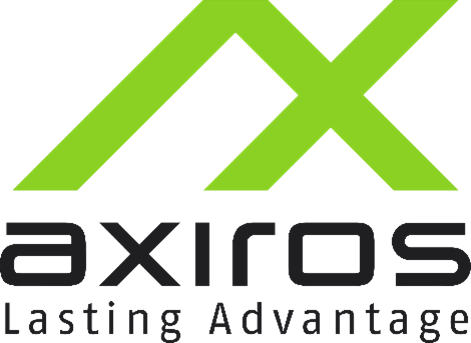 Gunther Klessinger, CEO and Founder of long-standing Broadband Forum member and Bavaria-based Axiros, helped provide a warm welcome to the Member Meeting in Munich.
Gunther Klessinger, CEO and Founder of long-standing Broadband Forum member and Bavaria-based Axiros, helped provide a warm welcome to the Member Meeting in Munich.
But as well as local hospitality, the Axiros team provided valuable insight from the perspective of a device management company that works with more than 400 operators and connects billions of people and devices.
Axiros has been actively involved with the Broadband Forum since 2006, contributing to technical work and industry standards that make a difference. “It’s a pleasure to continue that journey alongside so many dedicated member companies,” said the company on LinkedIn during the meeting.
As Gunther delivered a keynote as part of the Opening Plenary, he explained the company’s dedication to empowering seamless device management across all protocols and services. The company has contributed to major specifications, including TR-069, TR-369, TR-098, and TR-181 and lends its expertise in leadership roles in the Connected User Work Area to advance this goal for the ecosystem.
Gunther noted that the technical discussions and practical applications of the Broadband Forum’s work is what sets it apart and provides true value to members, like Axiros, that seek to enhance the customer experience.
Gunther also delivered a BASe Technical Summit presentation on ‘CPE Vendor-Agnostic Home Portals,’ which offered attendees insights including the transition from Auto Configuration Server (ACS) to fully open and possibly standardized Application Programming Interface (API) Platforms, focused on orchestrating data flows between CPE and apps for the end-users.
Many thanks to Axiros for sponsoring a successful Member Meeting!
Work Area Updates
For the full list of all Technical Reports published by Broadband Forum, click here. Please feel free to share this information with your colleagues so they are engaged with and aware of the developments of this work. For additional insight and to get involved, sign up for access to Broadband Forum tools and access your account using your company email address.
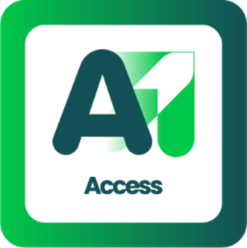 Test plans, a new project proposal, and Plugfest events progress within Access Work Area
Test plans, a new project proposal, and Plugfest events progress within Access Work Area
The Access Work Area focuses on developing technical specifications and test plans that deliver multi-vendor interoperability for last mile broadband deployments across access network technologies such as fiber, copper, and wireless networks (HS-PON, XGS-PON, 25GS, NG-PON, Gfast, MoCA, etc.).
In Progress:
The Access Interoperability and Test Project Stream continued work on PON and MoCA Access test plans:
- DTP-255 OLT-ONT Interoperability Test Plan contributions were reviewed.
- WT-423 PON PMD Test Plan Final ballot version was agreed to and is ready for the Final Ballot.
- WT-500 MoCA Test Plan procedures were approved. Vendors are requested to provide input on the performance targets prior to the Fall Meeting, with the aim of progressing to Straw Ballot during the meeting.
The Access Management Project Stream continued to work on YANG contributions, specifically:
- WT-385 PON YANG contributions were reviewed.
- WT-489 ONU Authentication contributions were reviewed.
- WT-496 MoCA YANG contributions were reviewed.
The project stream is informally discussing how to collaborate with IETF with WT-505 ONU Management at Scale.
A security brainstorming session was held, where it was agreed to prepare a new project on ‘Access Security’ (which will be shared with other work areas).
Events:
The Access Work Area is involved in a number of PON Plugfests for XGS, 25GS, and HSP PON systems taking place this year:
- On July 7-11 in LANPARK’s testing facility in France. The scope of the Plugfest will be addressing portions of the TC layer test plan TR-309 and the OMCI Interoperability test plan TP-255 for XGS-PON, 25GS and HSP.
- On October 6-10 in UNH-IOL’s testing facility in Durham, New Hampshire. The scope will be discussed after the Summer Plugfest in France.
The next steps and proposals for the roadmap of the upcoming 2026 Plugfests were discussed. Plugfest participants are requested to provide feedback on proposed dates.
For more on the Access Work Area’s ongoing projects, please see: https://wiki.broadband-forum.org/display/BBF/Access+Work+Area.
 Matter, power management, and Residential Gateway performance were key focuses for the Connected User in Munich
Matter, power management, and Residential Gateway performance were key focuses for the Connected User in Munich
The Connected User Work Area develops specifications, implementation guides, reference guides, and test plans for the deployment, management, and consumption of services by the end-users.
The highly valuable TR-181 Data Model released version Device:2.19 following the Spring Member Meeting. The data model incorporated Wi-Fi Alliance Data Elements R4, a revamped Cellular data model to empower Fixed Wireless Access CPE, and the ability to manage Thread interfaces. Now the focus has turned to improving power management on the CPE in TR-181 data models.
The work area continued combining the Matter protocol with the User Services Platform (USP), with the specification, ‘MatterService Data Model for USP-enabled Devices (WT-517)’, set to be completed by the end of the year. Discussions were also held regarding the creation of an accompanying whitepaper on the project.
When integrated with the USP, the Matter protocol will enable BSPs to deploy compatible devices in the smart home faster and manage them more easily. Today, Matter networks and devices - such as a TV or speaker - are controlled via fragmented applications from multiple vendors. USP will allow all supported devices to be managed, monitored, and controlled by a standards-driven application regardless of the brand in use.
In the Subscriber Networking Project Stream, the group continued to evolve Wi-Fi performance testing and assess the necessary Wi-Fi 7 tests in TR-398. Issue 4 of this test plan remains on track to be published later this year.
The group also progressed efforts to unify Residential Gateway requirements with a new update to TR-124 and gateway performance proposals. The goal is to help BSPs and their subscribers determine if a Residential Gateway can match the capabilities of their broadband service.
The group continues to pioneer the app-enabled service gateway using USP as the framework to deploy value-added applications on the CPE. Working closely with the open-source community, the Connected User Work Area plans to release USP 1.5 later this year. USP 1.5 will allow for more advanced and granular services to be deployed securely.
Take a look at the Connected User’s latest work: https://wiki.broadband-forum.org/display/BBF/Connected+User+Work+Area.
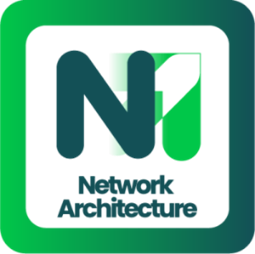 Network Architecture reports strong progress on subscriber session steering and Multi-Tenant Fixed Wireless Access
Network Architecture reports strong progress on subscriber session steering and Multi-Tenant Fixed Wireless Access
The Network Architecture Work Area develops the architecture and nodal requirements for end-to-end broadband deployments across traditional and converged networks to ensure the best possible quality of experience for users.
The Broadband Service Architecture (BSA) Project Stream continued work on BNG Disaggregation, specifically on the marketing of the latest publications and communicating why now is the right time for service providers to deploy dBNG. Even more features for the next issue were also reviewed.
Great progress was also made on Subscriber Session Steering (WT-474), which has a targeted for Straw Ballot readiness at the Fall Member Meeting. WT-474 will provide the architecture to pragmatically select, balance and manage subscriber session mapping to the service gateway.
Work continued on ‘Security Considerations for IPv6 Broadband Networks’ where progress was made on specific use case threats. Use case definitions were completed for the Public Wi-Fi User Authentication (TR-497i2), which is now moving to solution analysis.
The Wireless Wireline Convergence (WWC) Project Stream continued key work on Multi-Tenant Fixed Wireless Access (FWA), specifically to serve MDUs with gigabit connectivity. All of the contributions have been reviewed and integrated, with the WT-507 going to straw ballot following the Summer Member Meeting. The companion marketing document ‘Key benefits of MT-FWA’ (MD-516) is sent to Straw Ballot. There will be a Multi-Tenant FWA demonstration as part of the Broadband Forum Innovation Demonstrations at Network X.
The Quality of Experience (QoE) Project Stream’s Broadband QED series has sent two documents to Final Ballot: 452.4 on measurement formats, and 452.7 on measurements of Quality Attenuation in multicast. The Project Stream also continued its focus on the L4S project (WT-519), with great progress being made on use cases. L4S will also feature in the demos at NetworkX this year.
For more information on Network Architecture Work Area’s ongoing work, visit: https://wiki.broadband-forum.org/display/BBF/Network+Architecture+Work+Area.
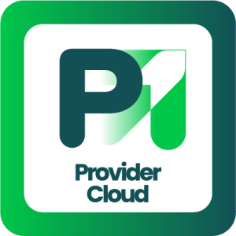 Provider Cloud makes device management progress and ignites collaboration with other standard bodies
Provider Cloud makes device management progress and ignites collaboration with other standard bodies
The Provider Cloud Work Area develops frameworks and specifications to enable broadband services and networks to utilize cloud-based deployment approaches, including automation and autonomous systems that will utilize machine learning and AI.
The group is progressing a key project, WT-383 Amendment 9, through Final Ballot. This amendment will bring the YANG model for VoIP, extending BBF YANG management support to nodes offering traditional voice services over a packet-based network. It will also add a range of improvements related to QoS, forwarding and transceiver management. Publication is planned for early July.
The CloudCO Architecture Project Stream continued work on updating the architectural framework and OLT disaggregation, with revisions made to both WT-384 Issue 2 and WT-477 Issue 2. The project stream also began a new project on WT-525 (Linux Foundation and BBF Alignment Analysis, Requirements and Recommendations). The project brings together the BBF and Linux Foundation to align their respective works on architectural alignment and initial gap analysis with recommendations, vOMCI, OpenOMCI, YANG and Cloud-CO NBI. The marketing paper on CloudCO 2.0 is progressing towards publication.
The Cloud Components Project Stream continued work on data collection with a focus on IPFIX on change protocol and network element interface for Broadband Network Data Collection (WT-508). A project on SD-WAN (WT-495) has progressed to Straw Ballot, and a project on Automated Intelligent Management Architecture (WT-436 Issue 2) has progressed with the addition of requirements on sandbox and energy efficiency. The marketing paper on Autonomous Network is close to publication.
The Cloud Interfaces Project Stream will continue to work on the intent-based interface between orchestrator and controller (WT-528), on topology and inventory (WT-454 Issue 2) and on interface interoperability and conformance tests between OLT and controller (WT-414 and WT-520).
More information about the Provider Cloud Work Area can be found at: https://wiki.broadband-forum.org/display/BBF/Provider+Cloud+Work+Area
 The Service Requirements Work Area launches AI in broadband networks project and progresses service and QoE definitions
The Service Requirements Work Area launches AI in broadband networks project and progresses service and QoE definitions
The Service Requirements Work Area defines user-centric, actionable service requirements and specifications for subscriber, access, and Broadband Service Providers’ (BSPs’) core networks. The work area is focused on providing guidance on the requirements relevant for the industry to drive the technical, services-led work of Broadband Forum’s Access, Connected User, Network Architecture and Provider Cloud work areas.
Three new project proposals have been reviewed. An agreement was made to start Phase 1 of the ‘AI in Broadband Networks’ project. The Wholesale Open Access project proposal was reviewed and is taking shape towards the approval stage. The proposal for the ‘Authentication and Accounting with USP’ was introduced, with interested members invited to review and join the proposal and sign up to the NPIF. In addition, a further proposal for Wi-Fi HaLow is under development by interested members.
Work continued on the ‘Service and QoE Definitions’ project (including the WT-524 Framework). The project will provide comprehensive definitions of QoE indicators for services and their quality requirements. It will provide a useful tool for service providers to check the level of their service quality, and a reference for solution providers to verify functionality and pain points of their solution. At the Summer Member Meeting service types and categorization, and KPI requirements including for cloud gaming services, were discussed.
A joint session was held with the Marketing Committee, focused on marketing planning and the opportunities to drive activities around services-led broadband.
While the work of the group holds significant importance for the industry and external service requirements, its progress is driven by membership engagement. The Work Area invites members to take the opportunity to contribute topics and work on where they would like to see greater innovations on existing requirements and address new service types.
You can learn more about the Service Requirements work area here: https://wiki.broadband-forum.org/display/BBF/Service+Requirements+Work+Area
 YANG Ninjas: Leading YANG across the broadband industry
YANG Ninjas: Leading YANG across the broadband industry
The newly formed “YANG Ninjas” is an advisory group of volunteers responsible for reviewing YANG data models created within the Broadband Forum. Its task is to ensure consistency and adherence to the Broadband Forum YANG Best Current Practices (OD-360). The group is overseen by the YANG Sensei: Joey Boyd (Adtran) and Sven Ooghe (Nokia).
The advisory group is actively looking for new volunteers to join the team and provide their expertise. Volunteers will help the development of high-quality YANG data models and management specifications within the BBF Work Area’s including Access, Provider Cloud, Network Architecture and Connected User. Entry level criteria include a proven knowledge of YANG data modeling and preferably knowledge of the different tools used to create and publish YANG models.
If you are interested in joining the YANG Ninjas, contact Joey or Sven or find out more on the Wiki: https://wiki.broadband-forum.org/display/BBF/YANG+Ninjas.
 OB-CAS publishes first release
OB-CAS publishes first release
The Open Broadband CloudCO Application Software Development Kit (OB-CAS) aims to make monitoring and maintenance easier for BSPs, enabling them to easily integrate applications into their access network management platforms. BSPs will also have access to a greater selection of fit-for-purpose applications from a community of software vendors. The OB-CAS team is continuing its journey to develop an open API framework to allow applications to interact with an access domain controller. These applications typically consume and analyze network data for enhancing or automating service assurance.
OB-CAS has published its first release (1.0.0) of its SDK, containing the wrappers for KAFKA, Opensearch, FluentD, and NETCONF APIs, as well as a sandbox environment comprising OLT simulators. It also includes the alarm correlation app, which was demonstrated at Network X 2024.
This year, the project team has added the Open TSDB API to its SDK. Open TSDB is an efficient way to store a time-series of KPIs/metrics retrieved by a data collector from the network. It can enable 24/7 assurance, troubleshooting analysis, and planning.
At Network X 2025, the OB-CAS team will be demonstrating its “smart threshold setting” application, which can detect anomalies in a running time-series of metric values without using pre-defined and/or manually set thresholds on the network elements. As part of the Broadband Forum Innovation Demos, the team will also be demonstrating how a subscriber traffic classification app being developed by Condor Technologies works with OB-CAS APIs and how OB-CAS can work alongside the Nokia access controller platform controlling real OLTs/ONTs.
Management and data analysis software application providers are invited to join OB-CAS’ project to help shape the API requirements and test and grow the SDK to see how their applications can operate in a CloudCO environment.
To learn more about the OB-CAS project’s ongoing work, please see: https://wiki.broadband-forum.org/display/OBCAS/OB-CAS+Home.
 OB-MAP works with prpl Foundation and Wi-Fi Alliance on Configuration Templates
OB-MAP works with prpl Foundation and Wi-Fi Alliance on Configuration Templates
The OB-MAP (Multi Access Point) team has been actively collaborating with the prpl Foundation community and the WFA (Wi-Fi Alliance) Data Elements Task Group to define a Configuration Template Manager and the concept of Configuration Templates.
These Configuration Templates offer a flexible way to describe the Wi-Fi configuration that a manager intends to deploy on a local network, even before the network is available. In addition to the formal description of these new entities, a corresponding data model node has been defined and will be contributed to TR-181 in the coming weeks.
As well as beginning to study data modeling for Wi-Fi sensing, the group is now shifting its focus towards the Device.IEEE1905 node. It aims to extend it so that it can accurately describe the entire topology of a local network. The project team holds a one-hour meeting every two weeks to advance this work.
To learn more about the OB-MAP project's ongoing work, please visit https://wiki.broadband-forum.org/display/OBMAP/Overview.
 OB-STAMP to take part in Network X demos
OB-STAMP to take part in Network X demos
The OB-STAMP (Open Broadband – Simple Two-Way Active Measurement Protocol) tool aims to reduce the cost and time of deploying and implementing infrastructure for measuring network latency in broadband service provider (BSP) networks. Broadband Forum standards, including Quality of Experience Delivered (QED) and User Services Platform (USP), will play a key part in the project.
OB-STAMP provides an easy-to-deploy component that simplifies network performance data generation, collection, and analysis. This data is crucial for training and operating AI deep learning tools, which are key enablers of the Automated Intelligence Management (AIM) framework. The project allows BSPs to proactively monitor their networks to avoid network failures.
The open-source project has developed a STAMP Sender and Reflector, that is fully compatible with RFC 8762 and its associated extensions, to be installed on Customer Premises Equipment (CPE).
The overarching aim of the project is to develop a component outlined in the TR-390.2 document, enabling greater performance measurement between the CPE and the IP Edge. The TR-390.2 Amendment 1 document also outlines the feasibility of using the STAMP protocol to record performance measurements in the subscriber home network.
OB-STAMP will also be part of a Quality of Experience Delivered (QED) demonstration at Network X in Paris, October 14-16th.
To learn more about the OB-STAMP project’s ongoing work, please see: https://wiki.broadband-forum.org/pages/viewpage.action?pageId=331612538.
 OB-STEER calls for collaborators to build a reference implementation for Subscriber Session Steering
OB-STEER calls for collaborators to build a reference implementation for Subscriber Session Steering
A number of companies have expressed an interest in joining the OB-STEER project and to help progress the existing open source code base. The OB-STEER project started from code that was developed for last year’s Broadband Forum Innovation Demonstrations at Network X. Building on Broadband Forum’s working text WT-474, OB-STEER aims at creating a reference implementation of the Subscriber Session Steering architecture to deliver flexible, on-demand connectivity and simplify network management.
Interoperability of Subscriber Session Steering is of utmost importance as it will be implemented in access network equipment of various vendors. OB-STEER therefore aims to reach out to vendors to agree on implementation options that remain compatible.
If you would like to get involved and contribute to the project, please contact [email protected]. Hagen provided a high-level view of OB-STEER in his video interview here.
For more information about OB-STEER and its current activities, visit: https://wiki.broadband-forum.org/display/OBSTEER/OB-STEER+Home.
 OB-UDPST’s first deployment continues integration; IETF protocol formalization progresses
OB-UDPST’s first deployment continues integration; IETF protocol formalization progresses
In Munich, the OB-UDPST team provided updates on the work to formalize the client-server protocol via an IETF Request for Comments (RFC). Interested members can track the progress here: https://datatracker.ietf.org/doc/draft-ietf-ippm-capacity-protocol/.
At the last Member Meeting, in Hong Kong, it was announced that the OB-UDPST project team’s current release (version 8.20) has been deployed by Broadband Forum provider member AT&T. Work is continuing to integrate the software in the service provider’s new broadband measurement system.
Version 8.2.0 builds on the previous OB-UDPST, 8.1.0, making minor fixes and enhancements. The addition of multi-key authentication allows each individual server instance to better support a variety of client instances across different service offerings and device types. For large deployments, it is expected to significantly improve key management and maintenance.
The project team will look to implement further enhancements, including a service function that provides near real-time software monitoring capability as well as sub-second capturing of performance data.
OB-UDPST will be used in this year’s NetworkX demos. You can also watch OB-UDPST Project Lead, Len Ciavattone, taking part in a vBASe webinar as he discusses how TR-471 and OB-UDPST helps assure QoE.
For more information about the OB-UDPST project team’s current progress, please visit: https://wiki.broadband-forum.org/display/OBUDPST/OB+UDP+Speed+Test+Home.
 OB-USP-Agent publishes Jackdaw release; work ramps up on Kestrel
OB-USP-Agent publishes Jackdaw release; work ramps up on Kestrel
The OB-USP-Agent (OBUSPA) team has published Release 10 (Jackdaw release). The release incorporates updates to align with changes to the USP 1.4 specification and the USP Test Plan v1.3. It also introduces a MQTT bulk data collection mechanism and implements USP Broker optimizations as per an agreement with prpl Foundation. Three patch releases have been completed, with a fourth in progress.
Now attention has turned to Release 11 (Kestrel release), and scoping has started with some requests from the prpl Foundation based on both approved and in-progress BBF features (including the USP protocol and TR-181 data model).
The open-source software from OBUSPA has been part of upstream integrations with open-source communities prpl Foundation and RDK. OBUSPA is a key component in open-source middleware solutions (e.g., prplOS and RDK-B) as it enables the remote management of the device and opens up the possibility to decentralize the device's data model into USP-enabled containerized applications.
The project team up-stepped prplOS to OBUSPA 9.0.8, with a merge request currently pending for up-stepping to OBUSPA 10.0. RDK-B was up-stepped to OBUSPA 9.0.9.
For more information about the team’s latest work, visit: https://wiki.broadband-forum.org/display/OBUSPA/OB-USP-Agent+Home.
Congratulations to our new Board of Directors and Marketing Chair!
Broadband Forum has confirmed the following Board Directors and Marketing Chair for two-year terms.
Broadband Forum Board Directors:
- John Blackford (Vantiva)
- David Cluytens (Orange)
- Francisco De Carvalho (Radisys)
- Manuel Paul (Deutsche Telekom)
- Mike Talbert (Wistron NeWeb Corporation)
Broadband Forum Marketing Chair:
- Jason Walls (QA Cafe)
Appointments will also open soon for two Marketing Vice-Chairs to ensure coverage across the Broadband Forum Work Areas.
Upcoming events
- September 29 - October 1, 2025, BASe at SCTE TechExpo, Nashville, United States
- October 6-10, 2025, PON Plugfest at UNH-IOL
- October 14-16, 2025, BASe at Network X, Paris, France
Save the dates! Broadband Forum’s upcoming member meetings
Keep up to date on our latest activities and whereabouts!
- Follow us on LinkedIn (@Broadband Forum) and subscribe to us on YouTube (@BroadbandForumVideos) for more BBF content.
Welcome to our new and returning members!
We welcomed a number of new members and guest companies in Munich. We had 162 registered attendees, with 30 first-time attendees. Our latest members include COS Systems, CUJO AI, Inango, Metrotel, Morse Micro, QuantWifi, and SEI Robotics. Gemtek, TELUS, and Swisscom have upgraded their membership level from Auditing to Principal to actively participate in our work.
Are you interested in becoming the newest member of the industry’s leading standards body for defining broadband networks? Broadband Forum membership will not only accelerate your company’s progress but enable you to become a key influencer developing 5G, the cloud, the connected home, and access networks.
We have a range of membership options for companies of all sizes, from startups to large corporations and not-for-profit organizations. Our new regional Operator Membership category has further opened participation; take a look for further details of the access level privileges, benefits, and requirements.
To learn more about the benefits of membership, watch the video interview with Rhonda Heier, Director of Membership Development, discussing the value of the Broadband Forum membership here or email [email protected] for more information.
Contact information
Questions or ideas? Contact the Broadband Forum on +1 510.492.4020 or email [email protected].
